Glitter and poverty of knightly tournaments
The education of future knights was somewhat spartan-like. According to the customs of those years, up to 7 years, scions of noble families were brought up by their mother, from 7 to 12 years by their father. And after 12 years, fathers usually sent them to the court of their lords, where they initially played the role of page (in some countries they were called jacks or damoise).
The next step on the way to the knighthood was the service of Ecuye, that is, a squire. Ekyuye usually ran the stable of the lord and already had the right to wear a sword. In 21, the young man was knighted. The title of knight imposed on a person certain obligations, the failure of which sometimes led to demotion. In the XII century, this ceremony was to chop off the spurs of the heels. Later, he took more theatrical and artsy forms.
So, taking on the title of knight, the young man, in addition to serving the lady, assumed the obligation to obey the unwritten code of honor, observing loyalty to the two cults. The first and most important of these was the “fearless 9 cult”, which included 3 Gentiles (Hector, Caesar, Alexander the Great), 3 Judea (Joshua, David, Jude Maccabee) and 3 Christian (King Arthur, Charlemagne, Gotfried Boulon ).
Imitating them was the first duty of every knight. But nowadays the courtly cult of the Beautiful Lady, who was born in Aquitaine and Poitou, is much more famous in chivalrous romances. On this way the knight went through several stages, the first of which was the stage of the “timid knight” - who had not yet told his lady of his feelings. Having opened up to the lady of the heart, the knight received the status of “a prayer,” and, being allowed to serve her, became “heard”.
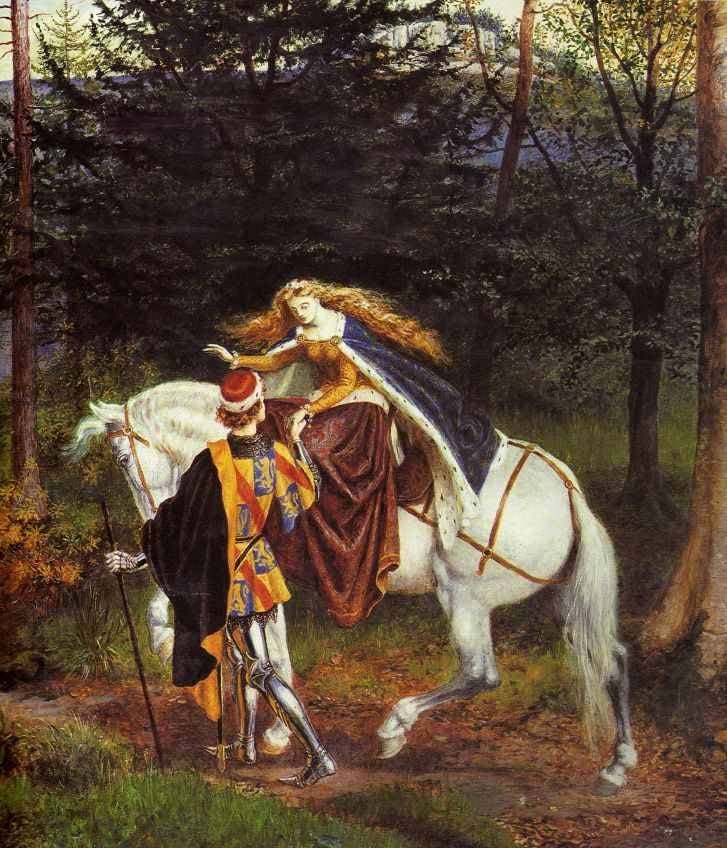
After the lady gave the knight a kiss, a ring and a symbol (belt, scarf, veil or scarf, which he strengthened on a helmet, shield or spear), he became her vassal. The movement of troubadours (wandering poets and composers) and minstrels (singers performing troubadour songs), who often traveled together like a knight and squire, are closely associated with the cult of the beautiful lady.
The relationship between the knight and his lady of the heart (who was also often a married woman), as a rule, remained platonic. “I don’t think that Love can be divided, because if it is divided, her name should be changed,” the knight and troubadour Arnaut de Mareil commented on this situation.
Out of compassion for your tears!
Boards are not needed - no caress, no speeches,
Even the nights you promised.
Poems by Peyre de Barjak.)
However, let's not idealize "love singers". I suspect that both the troubadours themselves and their listeners much more liked completely different songs. For example, the famous servant of Bertrand de Born:
Starving, naked,
Suffering, not warmed!
That the villans are not fat,
That deprivation suffered,
Ought from year to year
A century to keep them in black body ...
Let the farmer with the shopkeeper
In winter, they are walking naked.
Friends, forget pity,
So that the mobile does not breed!
Now we have the law:
Scourge peel men!
Scourge - lenders!
Kill them, bastards!
Their pleas do not heed you!
Drown them, throw in the moats.
Forever pigs cursed
Put in the casemates!
Their outrages and boast
It's time to stop us!
Death to the peasants and traffickers!
Death to the townspeople! "
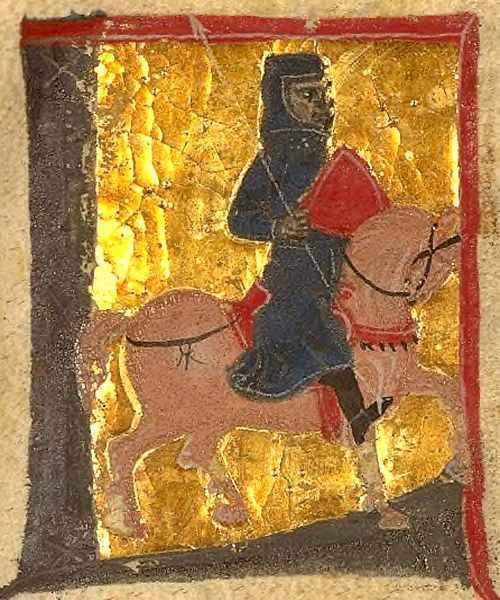
This hymn of caste arrogance, impassable stupidity and confidence in complete impunity. One can imagine how these songs were "liked" by representatives of the Third Estate. The descendants of knights and troubadours will have to pay for them with their blood.
But we seem to be distracted, let's go back to Aquitaine and Northern Italy, where in the XII-XIV centuries, the so-called “courts of love” were practiced, in which noble ladies handed down verdicts on heart matters. In one of these "ships" chaired by the famous beloved Petrarch - Laura.
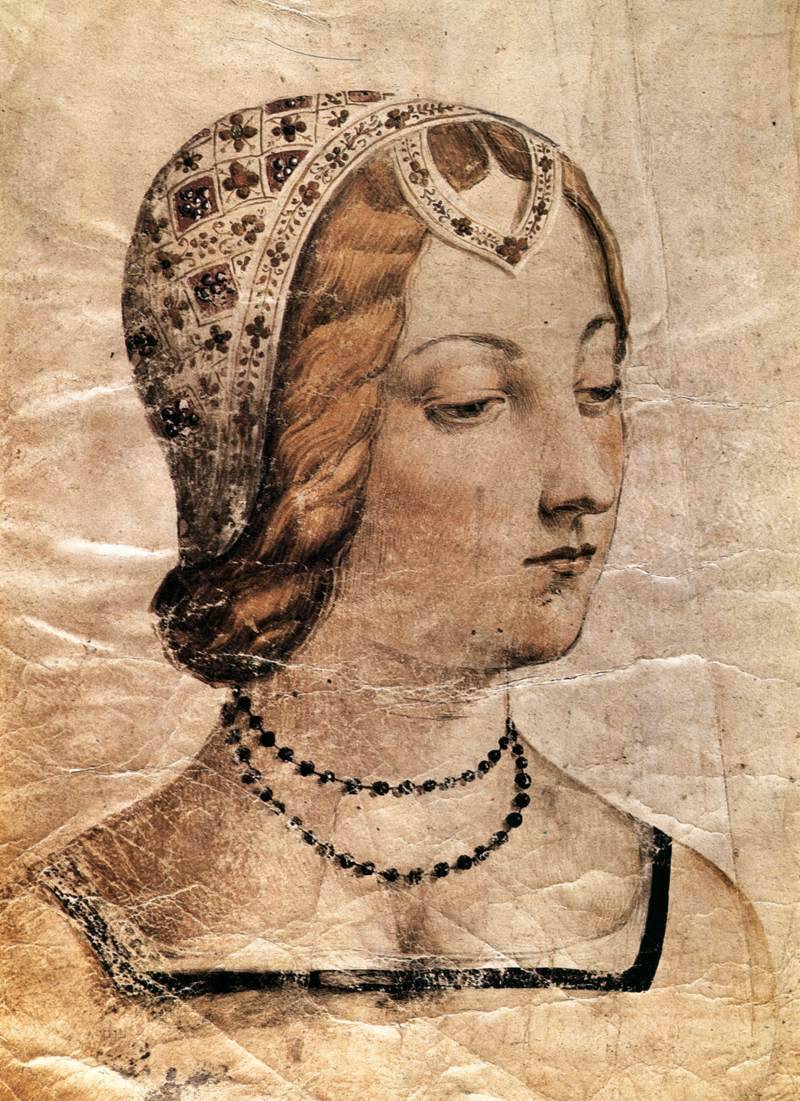
For the poor and ignoble knights, the service of the battle cult and the cult of the Beautiful Lady equally opened the way, following which it was possible to become in public opinion on the same level with the sovereign dukes and princes. The dukes of Aquitaine and the counts of Poitou rose from the throne to meet the "king of poets" - the troubadour Bertrand de Ventadorn, a commoner, a son who was either a baker or a stoker.
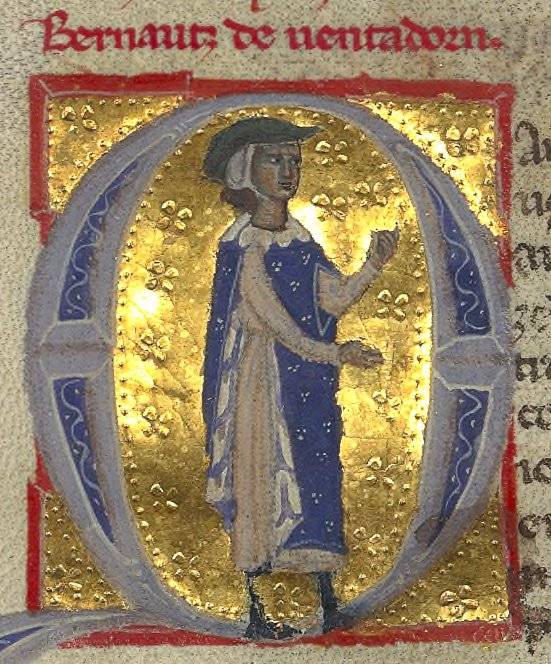
And Guillaume le Marechal, thanks to victories in knightly tournaments, not only became rich and famous, but even became the first tutor of the young king Henry III, and then the regent of England (1216-1219).
You, probably, paid attention to a certain contradiction: after all fighting and courtly cults, it would seem, should have led a knight along two different roads. This contradiction was resolved by organizing knightly tournaments, which poets wrote about, and victories in which the knights dedicated their ladies. History Retained for us the name of the person who was the initiator of these competitions. According to the Chronicle of St. Martin of Tours (written by Peano Gatineau), it was Geoffroy de Prey, who died in 1066, alas, not in war and not in the field of honor, but from the sword of the executioner. Serving the militant and court cult did not save the knight from the temptation to join one of the many conspiracies of the time.
In the first tournaments, the knights did not come into confrontation with each other. It all started with quintana - equestrian exercises with weaponsduring which a mannequin was to be struck with a spear or sword. Quintana description is given, for example, in stories about the first crusade (1096-1099 of the city). Moreover, it is reported that the dummy in this case was equipped with a lever that actuates his arm, which beat the injure knight in the back. Then, the quintana was replaced by the same bug, under the terms of which it was required to gallop on to get a spear in a hanging ring. In the future, “contact” varieties of the spear competition-martial arts appeared and became very popular. These were rentsoyg, in which it was necessary to deliver an accurate blow to the armor or helmet of the enemy, and shtekhtsoyg - a very dangerous form of martial arts, where the victory was required to knock the opponent out of the saddle. At the end of the XVI-beginning of the XVII centuries, with the development of firearms, tournaments degenerated into equestrian ballet. Fans of historical novels, probably, repeatedly read about the carousel - the equestrian ballet, performed according to a specific scenario.
However, we will not get ahead of ourselves and tell you about tournaments exactly what seems most interesting to the absolute majority of our contemporaries. Strangely enough, at first the knights in tournaments did not fight alone, but by battle groups - such competitions were called the Mel. Injuries in battles with real military weapons were unusually high, it is not surprising that by 1216, the mele gave way to beurds, whose members were armed with wooden swords and blunt spears, and tanned leather jackets played the role of heavy armor. But since the battle with the use of such "frivolous" weapons was not quite real, as it were, in the XIV-XV centuries. The beurd has become a match between squires and newly initiated knights on the eve of the main tournament. And tournament fighters at the end of the XIV century had special weapons. At the same time with the beurds, viewers were able to watch the pair fights - jostroy. And only then did it come to individual fights.
But the real decoration of the tournaments was not the above-mentioned types of duels, but Pa d'Arm - an armed passage. These were costume games-competitions, proceeding according to a certain scenario and extremely reminiscent of the role-playing games of modern Tolkienists.
The action was based on mythological plots, legends of a knightly epos about Charlemagne and King Arthur. At the tournament at the source of tears in the vicinity of Chalon in 1449-1550. Dame Source defender Jacques de Lalen fought 11 opponents and won in all fights. The knights who lost the battle on the spears, according to his will, sent their spear to his liege lord. Opponents who lost the sword fight were supposed to give the emerald to the most beautiful lady of the kingdom. And those who were unlucky in ax fights put on a gold bracelet with a picture of a lock (the symbol of shackles), which only a lady who could and could do it could remove from them. In 1362, in London, a lot of talk caused a tournament in which the riches were defended by 7 knights dressed in 7 costumes of deadly sins. And in 1235, the participants of the Round Table tournament in Esden got to the point that they went off to the crusade right from the tournament.
Interest in tournaments was so great that for the sake of participation in the tournament nobles sometimes forgot about military duty and the duties assigned to them. So, in 1140, the city of Ranulf, Count of Flanders, managed to seize Lincoln Castle only because the knights who defended it went to a tournament in a neighboring town without permission. In the XIII-XIV centuries, tournaments became so popular that in many European cities they also began to be held between rich citizens. Moreover, the equipment of rich merchants was not only not inferior, but often even surpassed the equipment of aristocrats. The knights began organizing unions and societies to organize tournaments (Germany 1270, Portugal 1330, etc.). Tournaments were held for collected contributions, and equipment was bought. In 1485, in Germany there were already 14 competing tournament fraternities. In England, the undisputed champion was a team of experienced knights, created by the already mentioned by us Guillaume Le Marechal, who literally terrorized other participants in tournaments. During just one of these tours, she captivated 103 knights. I got it myself Marechal. Once, having won the next tournament, he disappeared somewhere just before the award ceremony. The hero was found in the forge, the owner of which was trying to remove the twisted helmet from it.
As for the audience, their behavior often resembled the antics of modern football fans, which was greatly facilitated by the absence of strict rules for determining the winners, which appeared only in the XIII century. Disagreement with the decision of the arbitrators sometimes led to serious unrest and riots. In order to prevent such incidents, the organizers of the tournaments and city authorities concluded special agreements. An example was given in 1141 by the Count de Eco and the municipality of the city of Valencia, who entered into an agreement on the responsibility of those responsible for the riots organized in order to challenge the results of the tournaments. In the same place where the authorities relied on “maybe”, incidents of the “Boston Fair” type often happened when, in 1288, drunken squires dissatisfied with the refereeing burned half of the English city of Boston. The real battle took place in 1272 at a tournament in Chalon, when the duke of Burgundy seized the king of England Edward I by the neck and began to choke, which was perceived as a violation of the rules.
The English knights rushed to help their lord, the Burgundian nobles also did not stand aside, and then foot soldiers, who used crossbows very effectively, joined the battle. Occurred in tournaments and other sad events. So, in 1315, in Basel, one of the stands collapsed during the tournament, many of the noble ladies who were standing on it were injured and injured.
A real breakthrough in the organization of tournaments occurred in 1339 in Bologna, where the system of points judging first appeared. By the 15th century, such a system for evaluating results became generally accepted. The score went on broken spears, which were specially made from fragile and brittle wood species - spruce and aspen. One spear was awarded to a knight who broke it when it hit the enemy body, two spears - if it broke along its entire length, three spears - if the blow knocked the enemy out of the saddle. Riding art was considered if the knight managed to knock down the enemy with the horse or hit the visitor three times. A system of fines was introduced: one spear for hitting the saddle, two spears - if the knight hit the barrier.
As tournament prizes, combat weapons or horses were usually assigned. At the annual tournament in Lille the statuette of the golden hawk served as a prize to the winner, and in Venice - golden wreaths and silver belts. In 1267, a “magic tree” with gold and silver leaves was planted in Thuringia: a knight who knocked out an opponent from the saddle received a gold leaf that broke a spear - a silver one. But sometimes the knights fought for much more extravagant rewards. In 1216, one of the English ladies appointed a live bear as the main prize. In 1220, the city of Waltman von Serenthetm from Thuringia announced that the knight who had beaten the “Keeper of the Forest” would be rewarded with honorable service to the lady of the defeated heart. And the ruler of Magdeburg, Brun von Schonebeck in 1282, awarded the winner to the winner a “beauty fairy” - a beautiful woman of humorous origin.
Taking the opportunity to legally assemble fully armed and with an armed retinue, the barons sometimes used tournaments to organize conspiracies and insurrections. Opponents of English King Henry IV in 1400 tried to kill him at the tournament in Oxford. A special place in history is occupied by the tournament in the Wall (1215), in which the barons trapped King John of the Landless, forcing him to sign the Magna Carta of Liberty.
In fairness, it must be said that, unlike the participants in modern role-playing games, the knights were exposed to tournaments of very serious danger. Often there were severe injuries, and even death of participants, regardless of their nobility and social status. Thus, in 1127, Count Flanders Karl Dobry died in the tournament. In 1186, the same fate awaited the son of King Henry II of England, Geoffroy of Breton. In 1194, this list was supplemented by the Austrian duke Leopold, and in 1216, Geoffroy de Mandeville, Count of Essex, was killed. Florent, Count of Holland, died in 1234. In 1294, in the tournament, an unknown knight killed the son-in-law of the King of England Edward I Jean, the Duke of Brabant, on whose account 70 was victorious. The worst result was the result of the tournament in the Swiss town of Nusa (1241), when the dust raised by the galloping horses suffocated from 60 to 80 knights. And 30 June 1559 in Paris in a duel with the captain of the Scottish shooters Count Montgomery, King Henry II of France was killed. A piece of a spear shaft hit the crevice and stuck into the king’s temple.
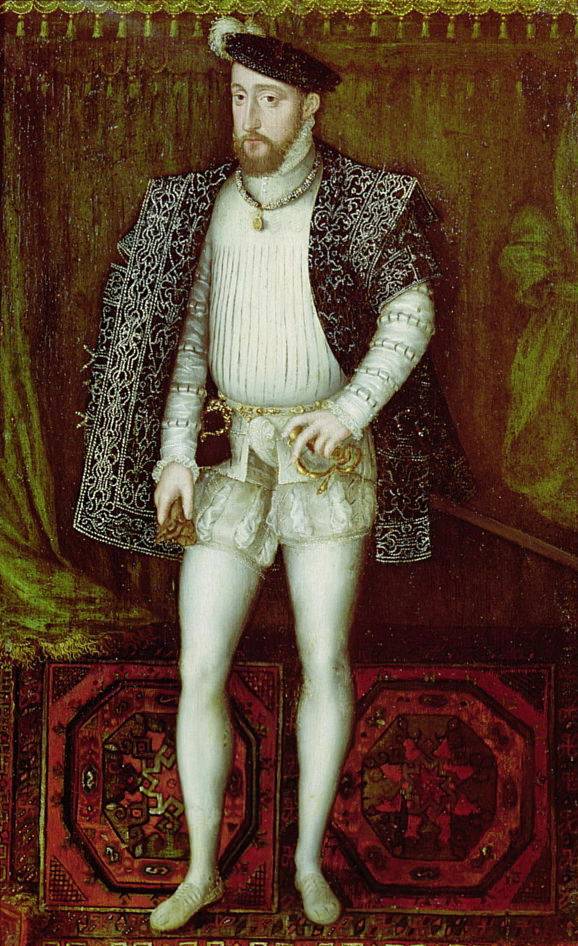
This sad incident glorified the physician and astrologer Michel Nostradamus, who shortly before this wrote the quatrain:
On the battlefield one-on-one
In his golden cage he will be gouged out. ”
(The fact is that Heinrich's helmet was gilded, and the lions were depicted on the arms of both opponents.)
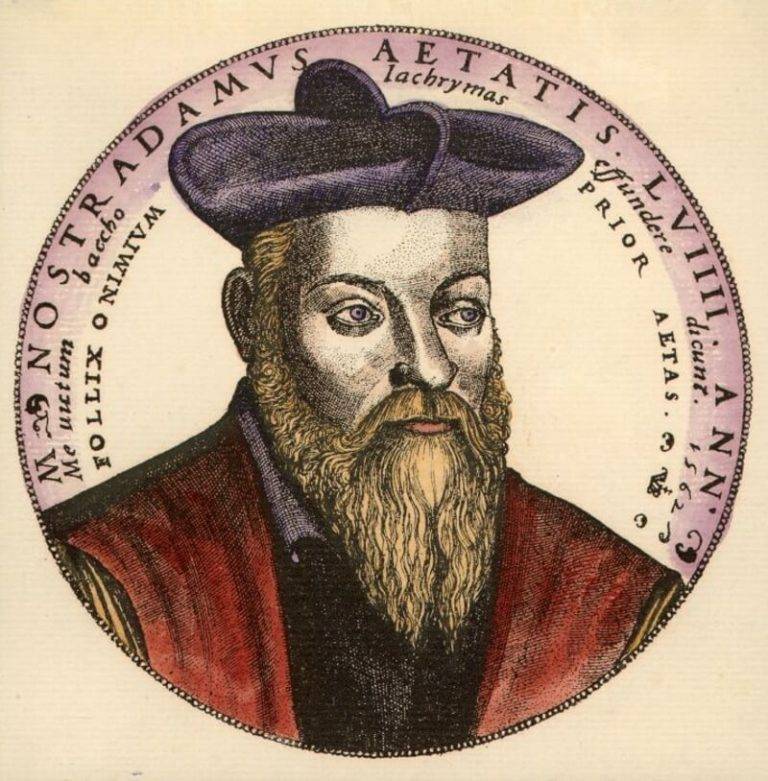
Numerous sacrifices led to the church councils 1130, 1148 and 1179. rendered verdicts condemning and prohibiting tournaments. But the monarchs and knights of all European countries unanimously ignored these decisions and, in 1316, the city of Avignon Pope John XXII was forced to admit the obvious, lift all bans on tournaments and cancel the church persecution of their participants. Moreover, already in the XIV tournaments gradually lost the character of training and competition in military prowess - the entourage meant more than the actual battles. High-born aristocrats did not want to expose their lives to real danger, but to flaunt themselves in luxurious armor in front of festively discharged ladies. The equipment has become so expensive that the circle of participants has sharply narrowed. Tournament fights became more and more conditional. In 1454, at the Duke of Burgundy tournament, most distinguished guests went to dinner, without even waiting for the end of the fights.
But, on the other hand, improvised tournaments appeared during the hostilities. During one of the Anglo-Scottish wars (in 1392), the four Scots took over the British in a duel on the London bridge, and the king of England Richard II was forced to bestow winners.
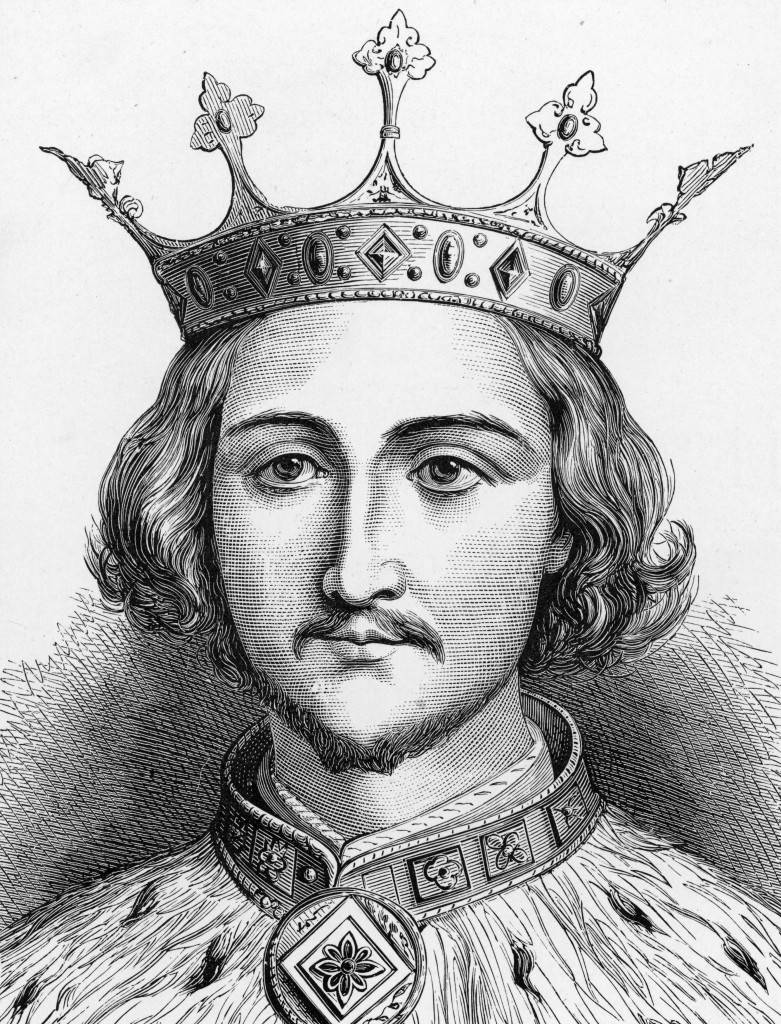
During the Hundred Years War, a battle of 30 took place in Ploermal (Brittany) - on 30, English and French knights fought on foot without restriction on the choice of weapons. The French won. In 1352, there was a duel between the 40 French and 40 Gascon knights. The tournament in Saint-Englevere near Calais in 1389 was particularly famous: Jean Le Mengre, Reginald de Royet and Senor de Saint Pi challenged the English knights, declaring that they would defend the field indicated by 20 days. The 100 English Knights and 14 Knights from other countries arrived. The French gained the upper hand in 39 fights. Their weapons were stored in the cathedral city of Boulogne, Charles VI awarded them 6000 francs.
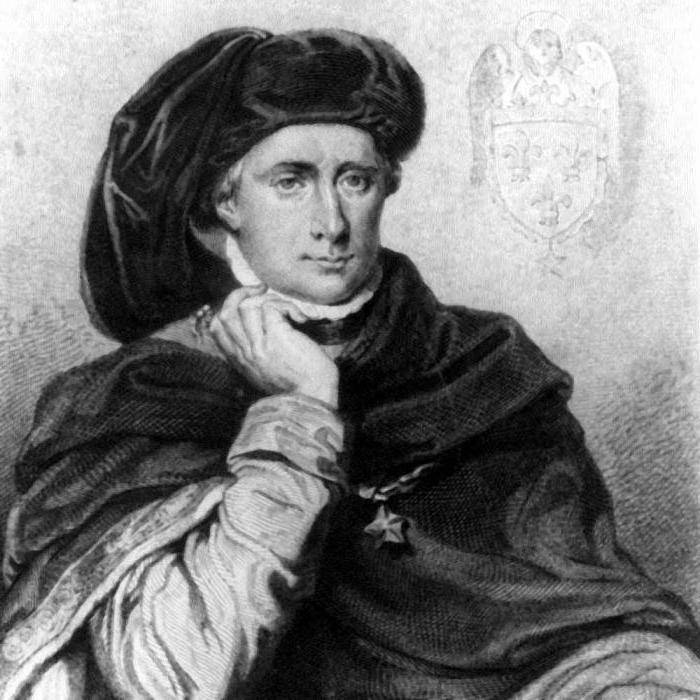
The famous French knight Pierre Terrail, lord de Bayard, whose motto was the words “Do what follows - and whether it will be,” was considered invincible in a horse-held spear fight, for which he received the nickname “spearman”. In 1503, he became famous for defending the bridge over the Garigliano River. In 1509 in the 13 tournament on 13, he and the knight Oroz during the bout were left alone against the 13 Spaniards. For 6 hours they continued to fight and remained undefeated.
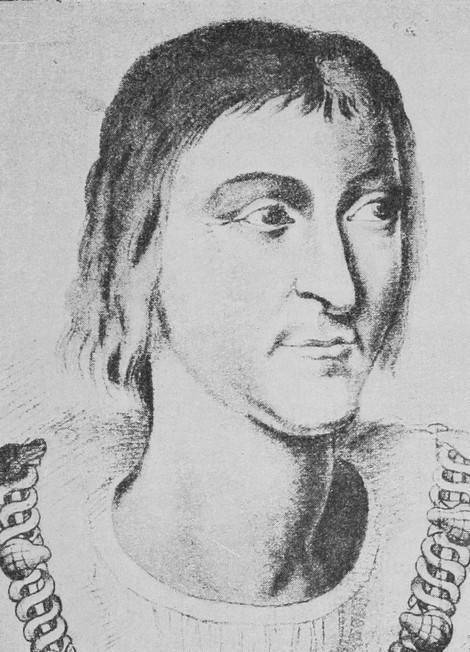
Bayard never used a firearm and was shot from an arquebus in a battle at the Sesia River in 1524. His grave is in Grenoble.
The last tournament fans of romanticism staged in 1839, near Eglinton in Scotland. Even now, theatrical battles in knightly armor are becoming an integral part of many historical holidays.
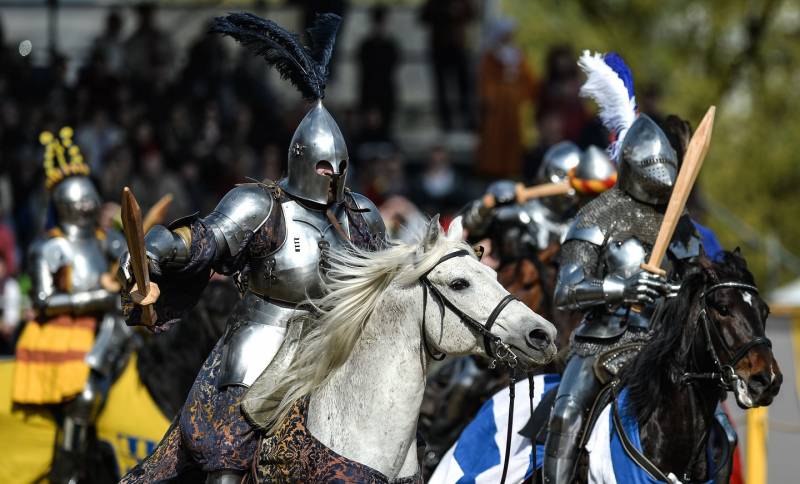
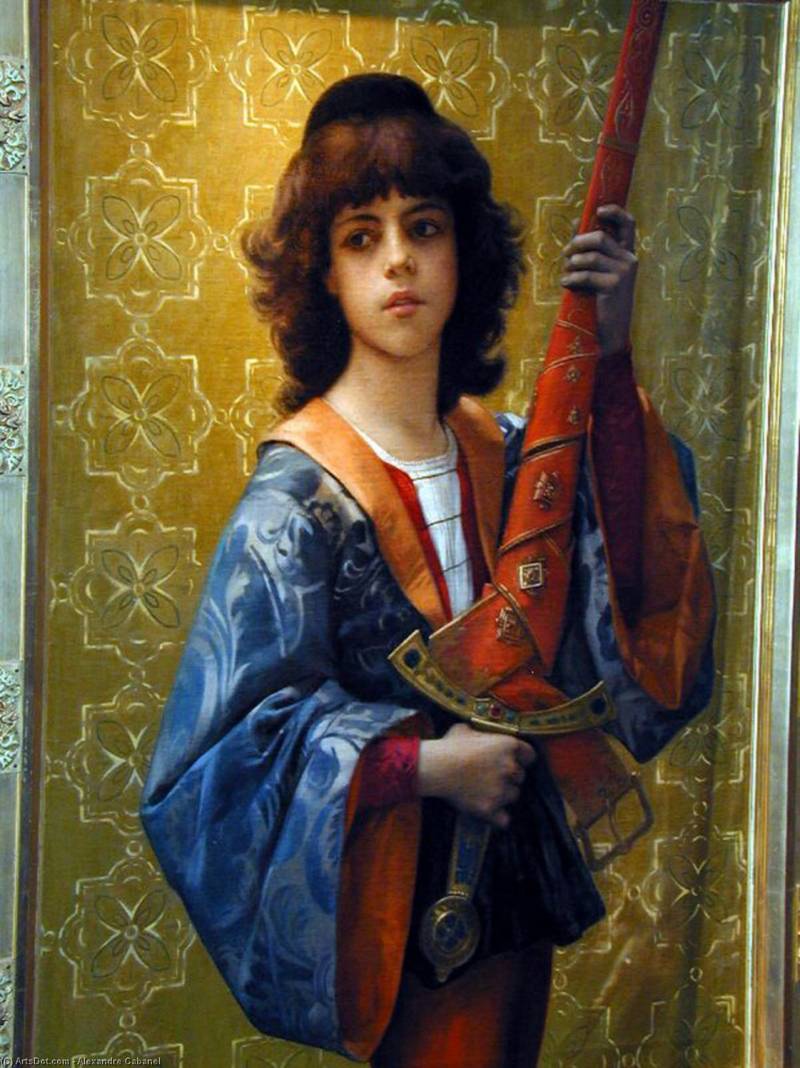
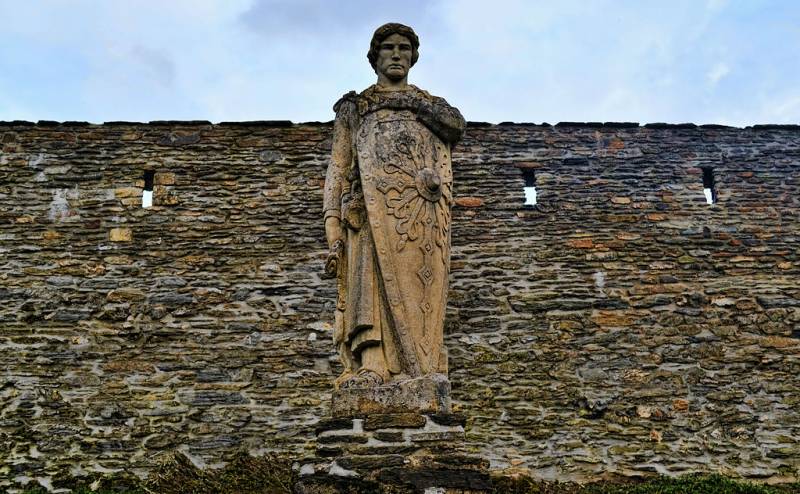
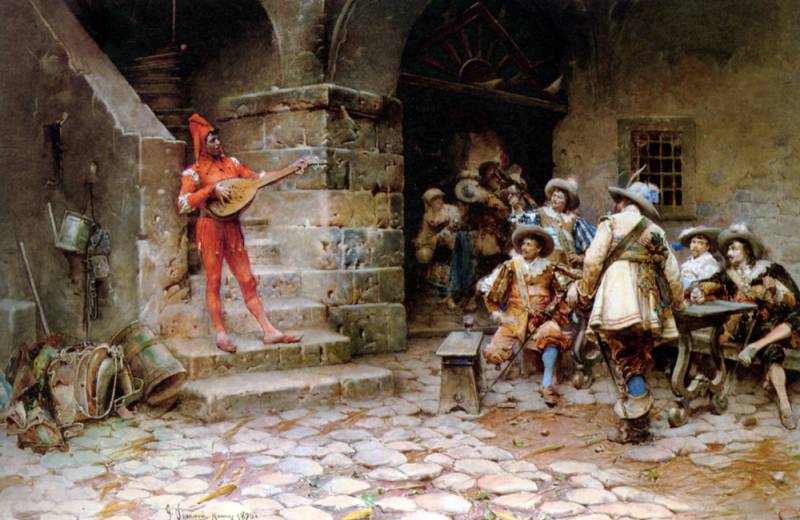
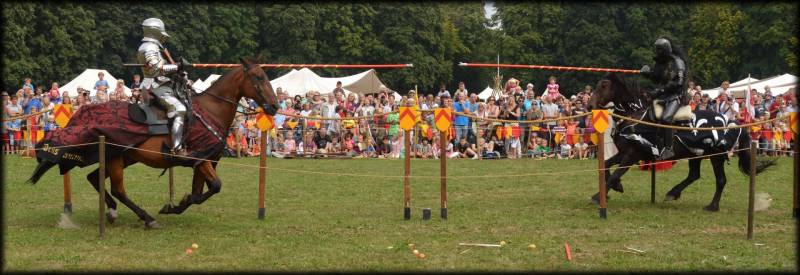
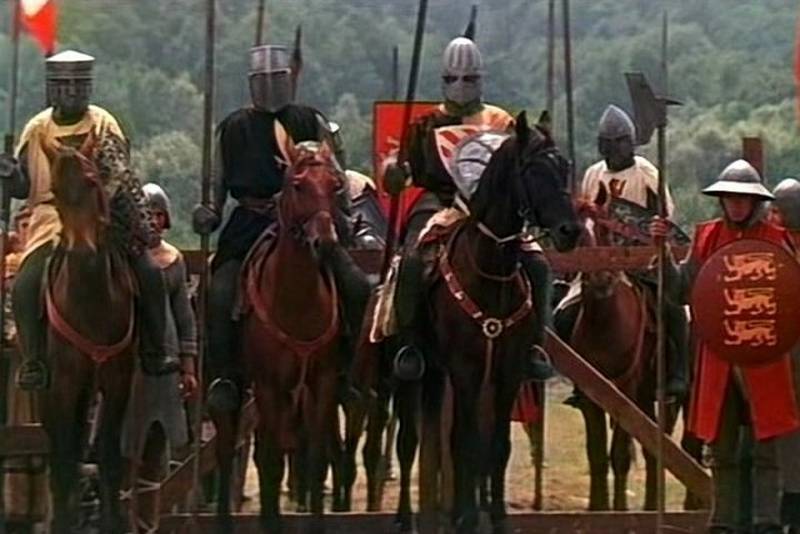
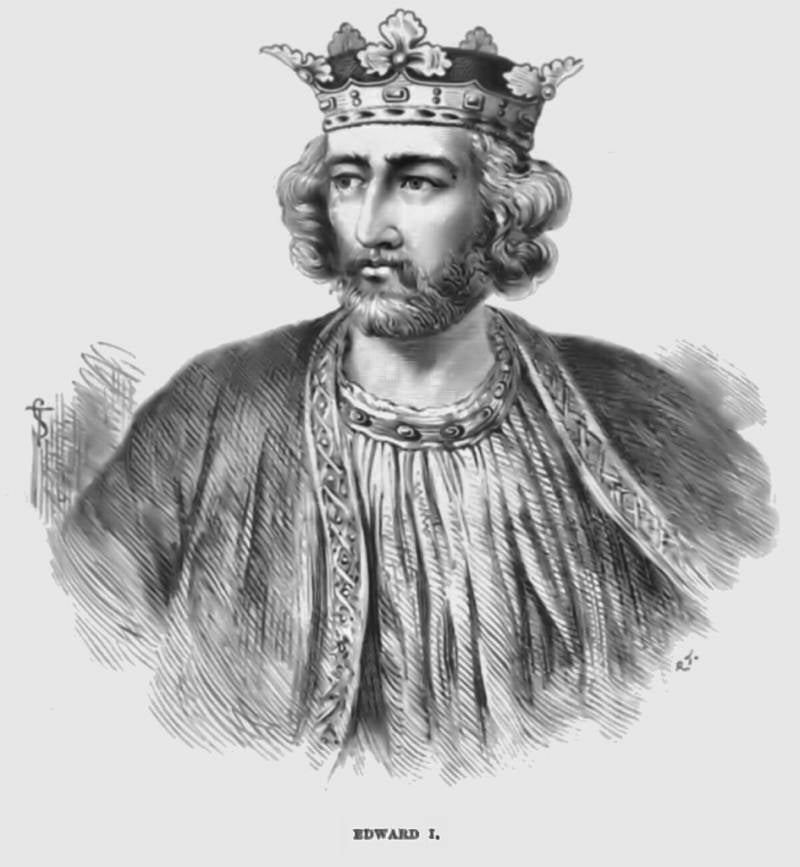
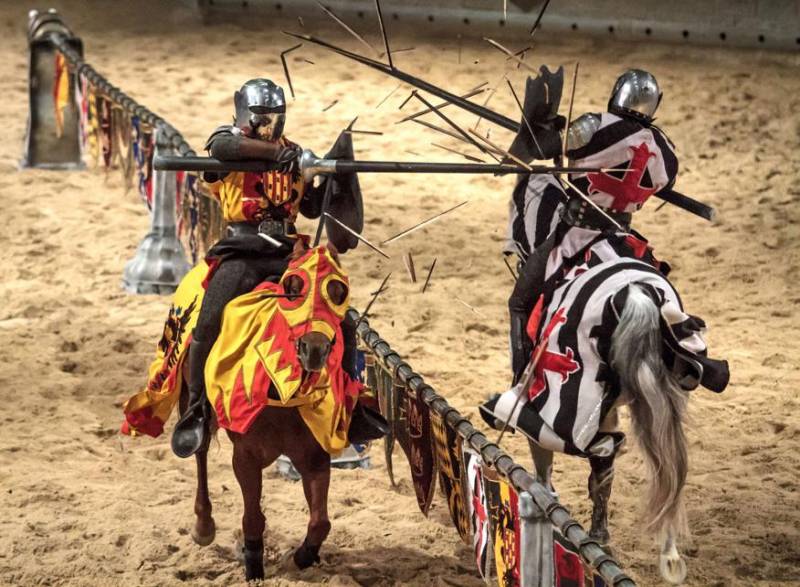
Information